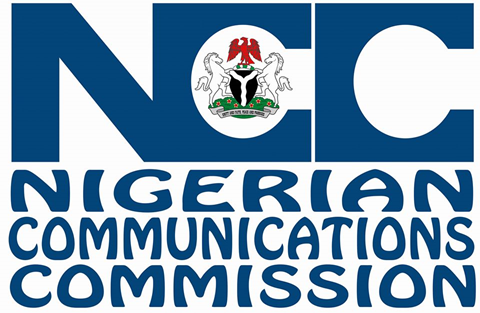PUBLIC POLICY
In its annual industry survey, “2017 Strategic Directions: Smart City/Smart Utility Report,” the consulting company Black and Veatch found both overwhelming enthusiasm for the concept of smart cities and wide-spread uncertainty about how to pay for implementation. Those surveyed included a cross-section of utility, municipal, commercial and community stakeholders. Ninety-four percent viewed the smart city movement as transformational and likely to have long-term positive effects on cities worldwide. Yet three-quarters of respondents said they lacked the financial resources to undertake their own initiatives.
Traditionally, cities have paid for large infrastructure projects either with city funds raised through taxes or with capital acquired in the municipal bond market. Neither approach holds much promise for smart city financing. There is little appetite for tax increases in general and only 5% of the municipalities in the Smart City survey were willing to use property taxes to fund smart initiatives. That suggests that city leaders and residents do not fully appreciate the financial benefits of such efforts. Whatever the reason, tax-based funding of smart city projects is unlikely any time soon.
Municipal bonds face different obstacles. One is the staggering amount of debt states and cities are already carrying. Another is the unconventional nature of smart city projects. According to a 2017 report by Deloitte, “Funding and Financing Smart Cities,” projects based on inter-connectivity lack the traditional single-sector focus municipal debt financing favors. According to the report, “This inherent flexibility presents both opportunities and challenges for cities from a funding/financing perspective.”
Some funding is available from public or nonprofit sources. 2017 was a good year for smart-city grants. The John S. and James L. Knight Foundation awarded six cities — Akron, Ohio, Boston, Detroit, Miami, Philadelphia and San Jose, Calif. — $1.2 million to explore how they might use the Internet of Things to meet their needs. The Smart Cities Council awarded Readiness Challenge grants to five cities — Austin, Tex., Indianapolis, Miami, Orlando, Fla. and Philadelphia. And the U.S. Department of Transportation committed up to $40 million to the winner of its Smart City Challenge, Columbus, Ohio.
“The global market for smart cities is projected to reach $1.2 trillion by 2020.”–Global Industry Analysts
As helpful as these grants are, such direct funding is neither sufficient nor reliable enough to fund smart cities long term. Utilities represent a potentially steadier partner, said University of Pennsylvania professor Howard Neukrug, who is also director of the Water Center at Penn. “Water utilities are not wealthy, but they do have some money,” he said. In fact, Commissioner Debra McCarty said that the Philadelphia Water Department (PWD) currently has more than $320 million in its annual capital budget, although Neukrug, a former commissioner of the department, said that PWD actually needs a capital budget of $600 million just to fund needed repairs and improvements, let alone innovative smart technologies.
Still, he said there are opportunities in Philadelphia and elsewhere for smart city programs to partner with water utilities and leverage their spending on infrastructure. Smart city networks looking to lay underground cable, for instance, can take advantage of water utilities’ continual investment in repairing and replacing pipes beneath city streets.
The private sector offers more robust financing options. The business community’s interest in helping smart cities is not surprising. According to a 2016 research study, “Smart Cities: A Global Strategic Business Report,” by Global Industry Analysts, “The global market for smart cities is projected to reach $1.2 trillion by 2020, driven by the growing world population, unscrupulous exploitation of natural resources, and the ensuing search for sustainable ways to accommodate the 7-plus billion people on the plant.”
Also not surprising is how much of the support is coming from the technology sector. At the 2017 Smart City Expo World Congress in Barcelona, Cisco announced a $1 billion initiative to provide “innovative financing options for cities and urban operators to drive the adoption of smart city technology.” For Cisco, accelerating the growth of smart cities is good business. The company offers basic connectivity essential to smart cities, a platform for connecting devices and sharing data across agencies, as well as third-party software cities can use to develop new smart applications.
Cisco’s City Infrastructure Financing Acceleration Program (CIFAP) offers both traditional financing options, such as private equity financing for operators and loans and leases for cities, and non-traditional options. The latter represent various types of so-called public-private partnerships (P3s).
Three-quarters of those surveyed view P3s as the best bet for smart city financing. Historically more popular outside the U.S. (and especially in Canada), American P3s have been taking off, especially as a way of financing highways, airports, public water systems and other large infrastructure projects. The appeal of P3s for would-be smart cities is that the city shares in the upside of these initiatives without risking much of the downside. In typical P3s, the private partners provide the upfront financing for projects that can span decades, and bear most or all of the risk that entails. They also frequently handle the long-term management of the projects. In return the private sector partners — often a consortium of investors and businesses — share in the revenue the projects generate and stand to profit from any improvements they make.
In CIFAP’s case, the private sector is offering a range of P3-type financing options:
- Consumption-based financing. Cities pay for technology based on usage, increasing or decreasing capacity as needed.
- “As a service” financing. Cities to avoid purchasing technology altogether. Instead, they consume it as a service, much as residents consume city services.
- With concession financing, cities gain the benefits of technology at little or no cost while getting the incremental revenue or cost savings generated.
- Revenue share financing can help to tie the cost of financing to the desired outcomes of that city’s smart infrastructure projects. Cities and investors then share the revenue streams or cost savings that result from these projects.
Smart city public-private partnerships face challenges. One is the need to generate revenue streams that corporate partners and investors can rely on. As former Philadelphia Chief Information Officer Charles Brennan said at the IGEL-Suez conference, there are two basic ways smart city projects can produce revenue, by selling either advertising or data.
Given the amount of data smart cities look to collect, it’s not surprising that many are interested in finding ways to profit from it. Smart streetlights can collect data about everything from street and foot traffic to pollution levels, and there are potential customers for such data. Local retailers would benefit from knowing how foot traffic varies from hour to hour and season to season, and local health clinics could better treat asthma patients if they could predict periods of increased air pollution.
But monetizing data raises the thorny issue of individual privacy. According to The Wall Street Journal, most cities are stripping publicly available data of personally identifiable information to provide at least some protection. Still, the paper said, it is possible to combine such data with other information “to figure out an awful lot of information about any individual.”
Advertising, too, makes many in city government uncomfortable, which is presumably why only 18% of those surveyed by Black and Veatch think ad revenue is a realistic opportunity for smart city financing. Yet at least two cities, New York and Kansas City, Mo., are already reaping financial benefits from smart city advertising. In both cases, interactive information kiosks are the source of the revenue.
There are two basic ways smart city projects can produce revenue, by selling either advertising or data.
In partnership with Cisco and other private companies, Kansas City installed 25 smart kiosks along a 2.2-mile corridor in 2016. Located at streetcar platforms, the kiosks let passengers know when the next streetcar will be arriving, provide information about local businesses and events and offer new ways to access city services. They also feature advertising that has already made the kiosks moneymakers, according to Bob Bennett, the city’s chief innovation officer.
In New York, the city formed an innovative partnership, LinkNYC, with a consortium of companies to install 7,500 digital kiosks throughout the city. Nine hundred have already been activated at no cost to taxpayers, thanks to the partnership arrangement, which specifies that companies bear the cost of the equipment, installation, ongoing maintenance and ad sales in return for a fixed share of the advertising revenue the kiosks are expected to generate.
Today, people use the kiosks to charge smartphones, access Wi-Fi and search for information about the weather and local restaurants. In the future, they may be get directions via augmented reality or use the kiosks to find and summon nearby autonomous vehicles, according to the company managing the project. In the meantime, those who stop by also see ads that are expected to generate more than $500 million in revenue over the project’s first 12 years.
The other major challenge P3s face is inertia, the reluctance of some city officials to breach the metaphorical wall separating government from business. In 2012, when Mayor Rahm Emanuel first announced the Chicago Infrastructure Trust, he called it “the breakout strategy for the city,” a creative way to spark business investment in infrastructure projects during a period of constrained government budgets. Three years later, a disappointed Emanuel tried to boost the performance of the venture by relaunching it as Chicago Infrastructure Trust 2.0. Yet when the city recently announced an ambitious plan to convert 85% of Chicago’s outdoor lights to smart LED technology, saving the city an estimated $10 million, it said the financing would come not from private investors but from a combination of general obligation bond issues and city funds.
It wasn’t for lack of interest on the part of private investors, said Leslie Darling, executive director of the Infrastructure Trust. “Private investors were very interested. But the city was not interested in privatizing a critical public safety asset.”
In the end, no single approach can resolve the financial challenges facing smart cities. It will take funding support from government and nonprofits, debt and equity financing, tax revenue, collaboration among utilities and others involved in the effort, plus a wide range of public-private partnerships and creative approaches as-yet unknown.









